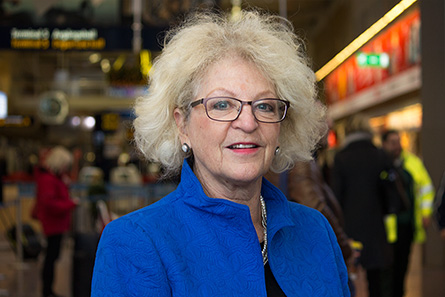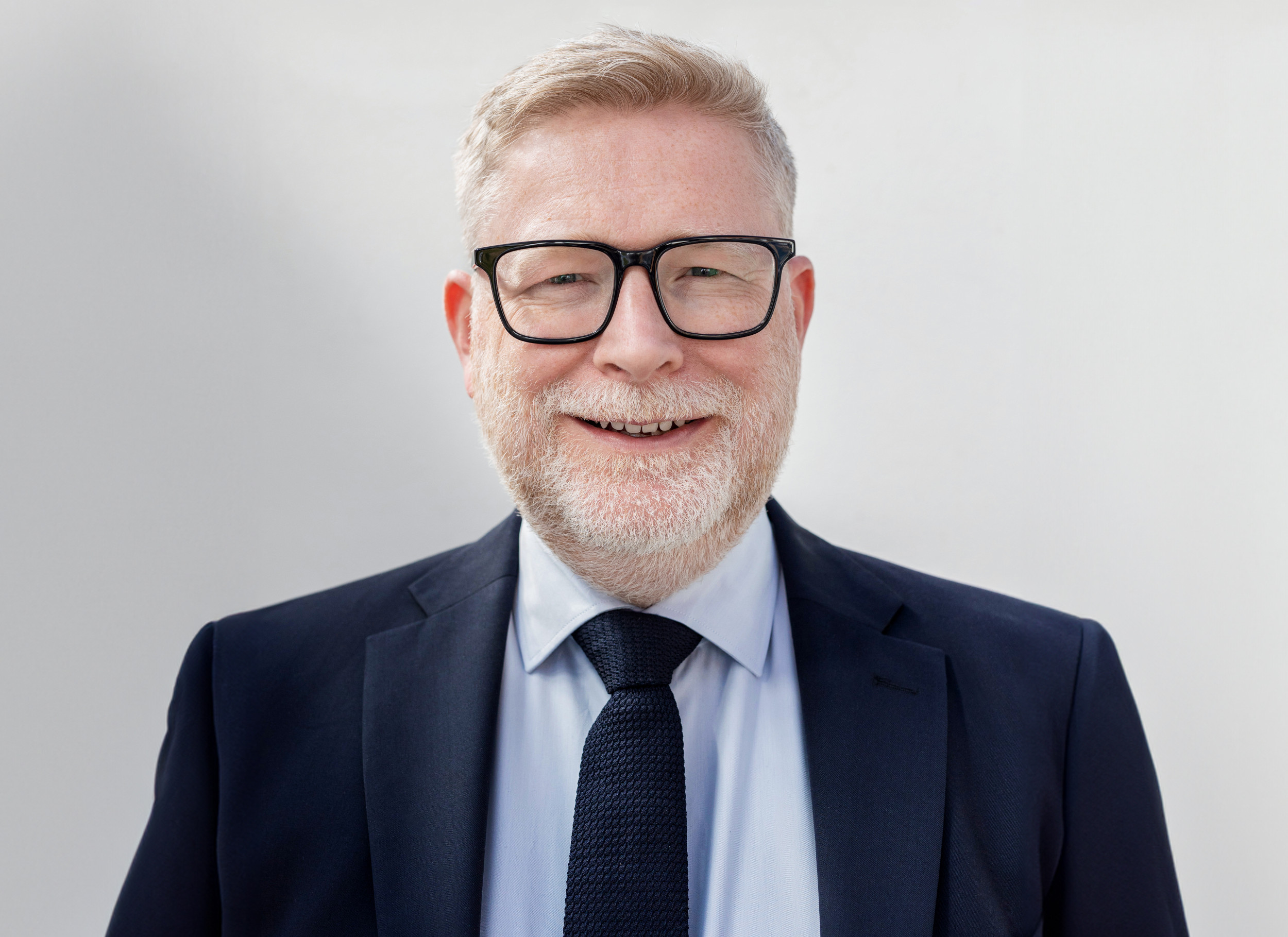This article has been translated with DeepL.
“I love writing, that’s why I became a researcher”
- Published: 10 Apr 2017,
- 12:00 AM
- Updated: 10 Apr 2017,
- 12:31 PM

The following text was also published under the vignette “The Portrait” in Entré No 1, 2017:
Candida Brush, a professor who champions a passion for entrepreneurship:
She lectures around the world on women’s entrepreneurship, major media outlets such as the Wall Street Journal cover her research, and her entire family is involved in a coconut oil company in the Dominican Republic. Professor Candida Brush visited Sweden in December to talk at Estrad about how to become more entrepreneurial.
Candida Brush is one of the pioneers in the field of women’s entrepreneurship research. She is a professor at Babson College – widely regarded as the best college in the US for entrepreneurship education. Before her research career, she was an entrepreneur in the aviation industry and ran a land development company with her husband.
There were no plans to focus on women’s entrepreneurship, despite the fact that she was one of the first to tackle the subject in the 1980s, even before she received her PhD.
– No, not at all. I completed my PhD late in life and wrote my thesis on the topic of international entrepreneurship. I was told that women’s entrepreneurship was not that important, says Candida Brush.
We are sitting in a two-seater sofa in the basement of the Playhouse Theater. In just over an hour, Brush will give an Estrad lecture on the theater stage. The theme is “How to become more entrepreneurial”. And it’s far from her first contact with ESBRI.
– It was actually thanks to ESBRI that we were able to start the Diana project, you helped initiate it.
The Diana Project, a research project on women’s entrepreneurship, was established in 1999. It was founded by five American researchers Candida Brush, Nancy Carter, Elizabeth Gatewood, Patricia Greene and Myra Hart. Today, the network is made up of 600 people from over 40 countries and has changed its name to Diana International. They meet regularly at self-organized conferences and publish books on the topic.
It is for the Diana research that Brush is best known in Sweden. In 2007, together with her Diana colleagues, she received the prestigious Global Award for Entrepreneurship Research.
– Our research shows that women entrepreneurs have experience, they are qualified, they want to grow their businesses, they have money – and they want more money. When you invest in companies run by women, you have the same chance of getting your money back as when you invest in companies run by men,” Brush says enthusiastically.
In 1996-1997, the venture capital boom came to the US and many smaller companies were able to grow rapidly. But despite high growth, women entrepreneurs received only a small share of venture capital.
– Fewer than 4% of companies that received venture capital had a woman on their team, and we wanted to understand why. This is how the Diana project was born.
Today, 15% of companies that receive venture capital have a woman on their team. A small step forward. The picture is less positive for those who hold the money. The number of female partners in venture capital firms has fallen in the United States. From 10 percent in 1999, to 8 percent in 2014.
– This means that 92% of all decision-makers in venture capital companies are men. 92%! This is important because people tend to invest in people who are similar to themselves.
– Our research shows that if a venture capital firm has a female partner, it is 40% more likely to invest in a company with a woman on the team.
When the Diana project started in 1999, there were myths that women were not qualified to run businesses, that they did not want money and that they were uninterested in growth. Logically, this created a mindset that it was women’s own responsibility to ensure they had access to venture capital.
– In our early research, we talked about what women needed to do to get to the money. But the responsibility does not lie with women. It is entirely the fault of male-dominated industry that women do not have access to capital.
A more equal distribution of women and men in venture capital companies would mean that more women would have access to capital. In addition, gender equality creates a natural win-win situation for both entrepreneurs and investors, as the range of companies to invest in increases if venture capital firms also target companies with women in the team.
In other words, investors can do even better business if they become more equal.
– Most private equity firms have not understood this – and it is the same all over the world. Those with female partners are the larger and older companies, while the smaller and newer ones are all male. It’s a challenge, says Candida Brush.
– Many women seeking capital tell us that they always look at the ownership structure of venture capital firms first. If there is no female partner, they do not even contact the company.
In addition to his professorship, Brush is a board member of several startups. She travels the world lecturing on entrepreneurship and is a well-known profile in the US popular press, such as The Wall Street Journal, Business Week online and Forbes. In addition, she is an angel investor, investing both knowledge and private money in companies.
– Women turn to business angels to find capital, as they find it difficult to get money from venture capital firms.
Naturally, fewer companies receive funding from venture capital firms than from business angels. In 2015, around 3 300 companies in the United States received venture capital and 73 000 companies received angel funding.
– 30% of business angel money goes to companies where the CEO is a woman. Women get the same chance to present their businesses to the angels as men do. That’s good, says Candida Brush emphatically.
With Brush’s long research and teaching experience in entrepreneurship, and the role of business angel and advisor, it’s inevitable not to ask for her top tips to succeed with a startup.
– In any case, you should not start a new restaurant. You need to solve a much bigger problem. And don’t do it alone, you need a team to work with. Find something you are passionate about, because you are more likely to succeed if the concept is meaningful to you.
Brush returns to passion and meaningfulness during the interview and the lecture.
– First step is to discover – what is your why? What you do must feel meaningful. I love writing, which is why I chose to become a researcher. I have written 160 articles and 10 books. I also love cooking without recipes and playing golf – into the water, onto the grass and back into the water. Creative processes if anything!
She grew up in Southern California with a father who was an entrepreneur. Her mother was a preschool teacher and entrepreneur to the core. The mother raised money and started various organizations. She hoped that her daughter Candida would also become a kindergarten teacher. But it was an older target group that she now teaches.
Brush tells us about a former Babson student from the Dominican Republic, Danni. After studying with her, he worked as a highly paid manager in the financial world. From the outside, he had everything you could wish for, but left the position one day because he no longer felt committed to his job. Instead, he started a company producing coconut oil in the Dominican Republic.
– Five years later, he is the largest producer of coconut oil in America. The oil is fair trade, organic, and 85% of employees are single mothers. Danni became successful at something that was meaningful to him. All the research shows that passion is important for the success of your idea.
The whole Brush family is involved in Danni’s company Solo Coco.
– One of my daughters does the social media strategy, the other handles sales in Southern California, my husband works in distribution, and I play an advisory role. It is only our third daughter who is not involved. Yet…
There are many books on business plans and financing. Literature that tells entrepreneurs what they should do to succeed. But how do you do it? How to think differently – like an entrepreneur? In 2014, Candida Brush, Heidi Neck and Patricia Greene published the book Teaching Entrepreneurship – A Practice-Based Approach, where teachers of the subject can learn pedagogy for entrepreneurship. It is a mix of drama, creativity literature and medical sociology applied in the world of entrepreneurship.
– Among other things, you teach students the value of imagining, improvising, being creative, experimenting and reflecting,” Brush explains.
It’s almost 10am and it’s time for Candida Brush to prepare for the lecture on the theater stage. It will be based on her and her colleagues’ proprietary pedagogy and will be largely about finding your why – and doing something fun.
Contact cbrush@babson.edu
More by Candida
Women’s Entrepreneurship in Global and Local Contexts. Edward Elgar, 2016 (co-edited with Cristina Díaz-García, Elizabeth Gatewood and Friederike Welter). See book tips on page 22.
Diana Report. Women Entrepreneurs 2014: Bridging the Gender Gap in Venture Capital. Executive Summary. Babson College, 2014 (with Patricia Greene, Lakshmi Balachandra and Amy Davis).
Teaching Entrepreneurship – A Practice-Based Approach. Edward Elgar, 2014 (with Heidi Neck and Patricia Greene).
Research on Women Entrepreneurs: Challenges to (and from) the Broader Entrepreneurship Literature? The Academy of Management Annals, No 1, Vol 7, 2013 (with Jennifer Jennings).
Research on Women Business Owners: Past Trends, a New Perspective and Future Directions. Entrepreneurship Theory & Practice, No 4, Vol 16, 1992.
More about Candida
Background: Former entrepreneur in the aviation industry and founder of a land development company. She received her PhD in 1992 from Boston University and was among the first in the US to research women’s entrepreneurship in the early 1980s. Today she is a professor at Babson College and holds the Franklin W Olin Chair in Entrepreneurship. She is an honorary doctor at Jönköping University and a visiting researcher at Bodö Graduate School of Business, Norway.
Hobbies: Playing golf and cooking, preferably without recipes.
Current: Lectured at Estrad on December 2, 2016 under the title “Being Entrepreneurial: Practices to develop your entrepreneurial mindset”. The lecture can be viewed at www.esbri.se/webb-tv



